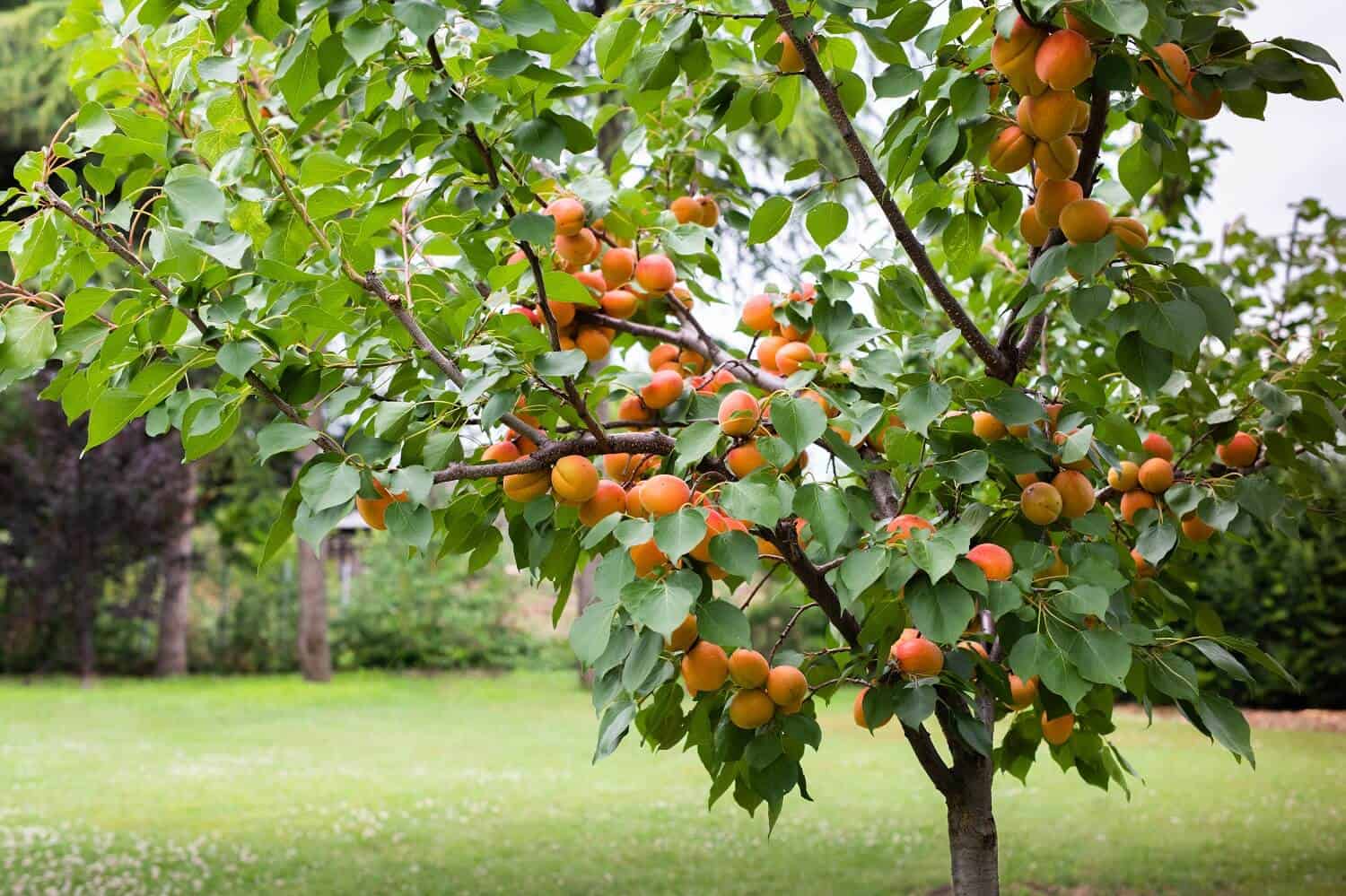If you're anything like me, patience isn't one of your strongest traits. Especially, when it comes to matters of gardening. You want to grow a plant today and have it flourishing and flowering the next month. This is quite normal.
No wonder, when it comes to establishing an orchard very few people are as excited as when starting a vegetable garden, flower beds, or pot plants.
The reason, it takes time for most fruit trees to establish and begin bearing those delicious fruits! But what if I told you that it doesn't have to be this way?
That there are several fastest growing fruit trees that you can begin harvesting in under two years from planting.
You'd be excited, right?
I know I am. That's why in today's post I'm going to list the fastest growing fruit trees to plant in your orchard so that you can begin to enjoy freshly picked fruits at the convenience of your home.
Let's get to it:
Fastest Growing Fruit Trees For Your Orchard
Blackberry Bush

Blackberry, Rubus is a perennial shrub known for its dark juicy fruits. As close relatives of wild roses, they're easy to grow and maintain as long as they get full sunlight, rich, and well-drained soil that is slightly acidic.
The blackberry bush will thrive in Hardiness Zones between 5 and 8. Under such circumstances, expect to start harvesting the fruits within two years after planting.
However, for the overbearing cultivars also known as primocanes, you start harvesting in as little as one year from the time of planting.
Passion Fruit
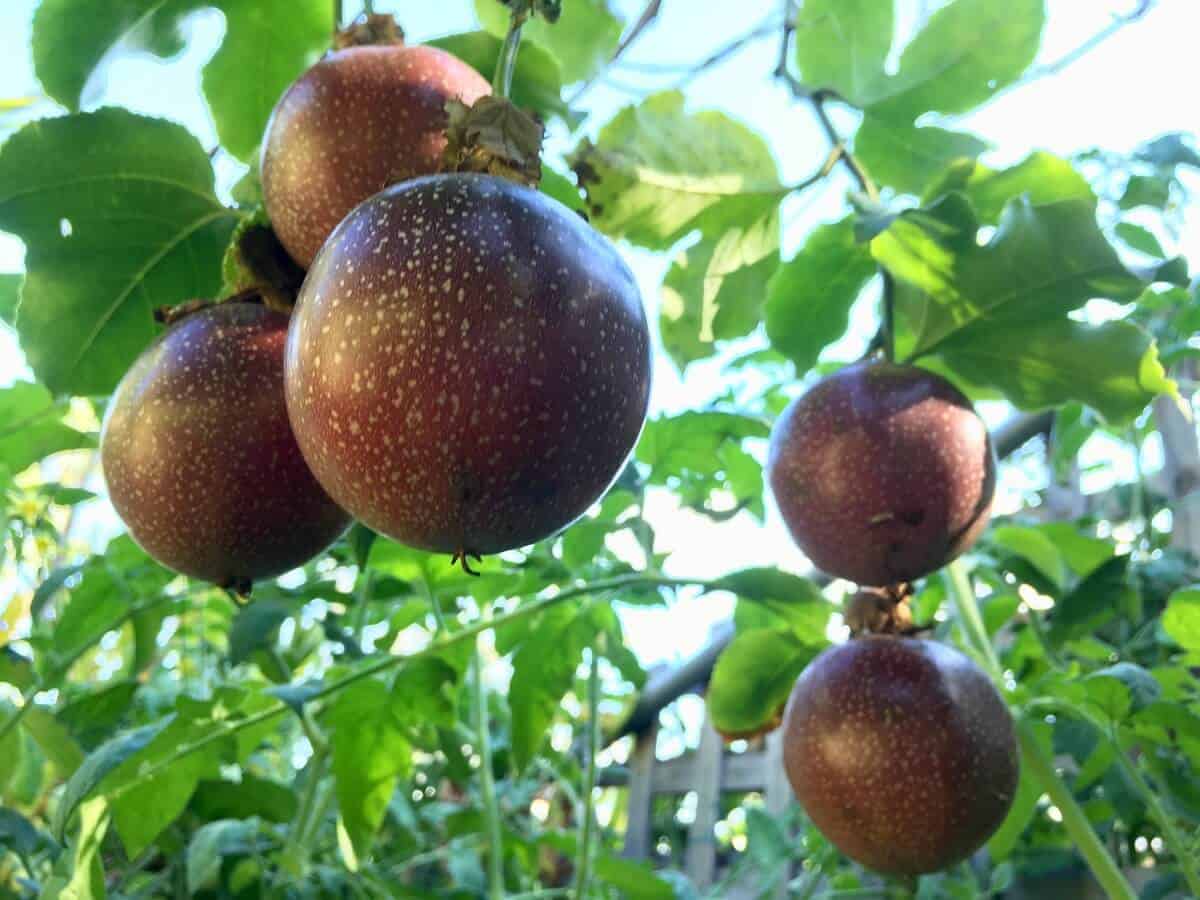
The sweet-tangy flavor of passion fruit makes it one of the most popular and sought-after fruits. It's native to tropical regions, but with proper care, you can grow it in your home garden as far north as zone 9b through 11.
Passion fruit loves full sun for at least 5 hours a day and well-drained soil. Under such optimal conditions, you can begin harvesting the fruits in as little as 18 months from planting.
When growing passion fruit, here are some common problems to look out for.
Strawberries

Although not trees, I thought it was worth mixing things a little bit by including vines and runners like the strawberries. This is because strawberries are one of the few fruit plants that bear fruits in the first year.
Therefore, as you wait for your other fruit trees to mature, you could be enjoying freshly picked strawberries.
Typically, you can grow them as perennials in USDA zones 5-8 or as cool-season annuals in zones 9-10. With approximately 6 hours of sunlight, you can expect to begin harvesting in 4 months! You can also grow strawberries in pots if the outdoor weather is too harsh.
Here's another guide on how to grow them in the garden
Dwarf Cavendish Banana
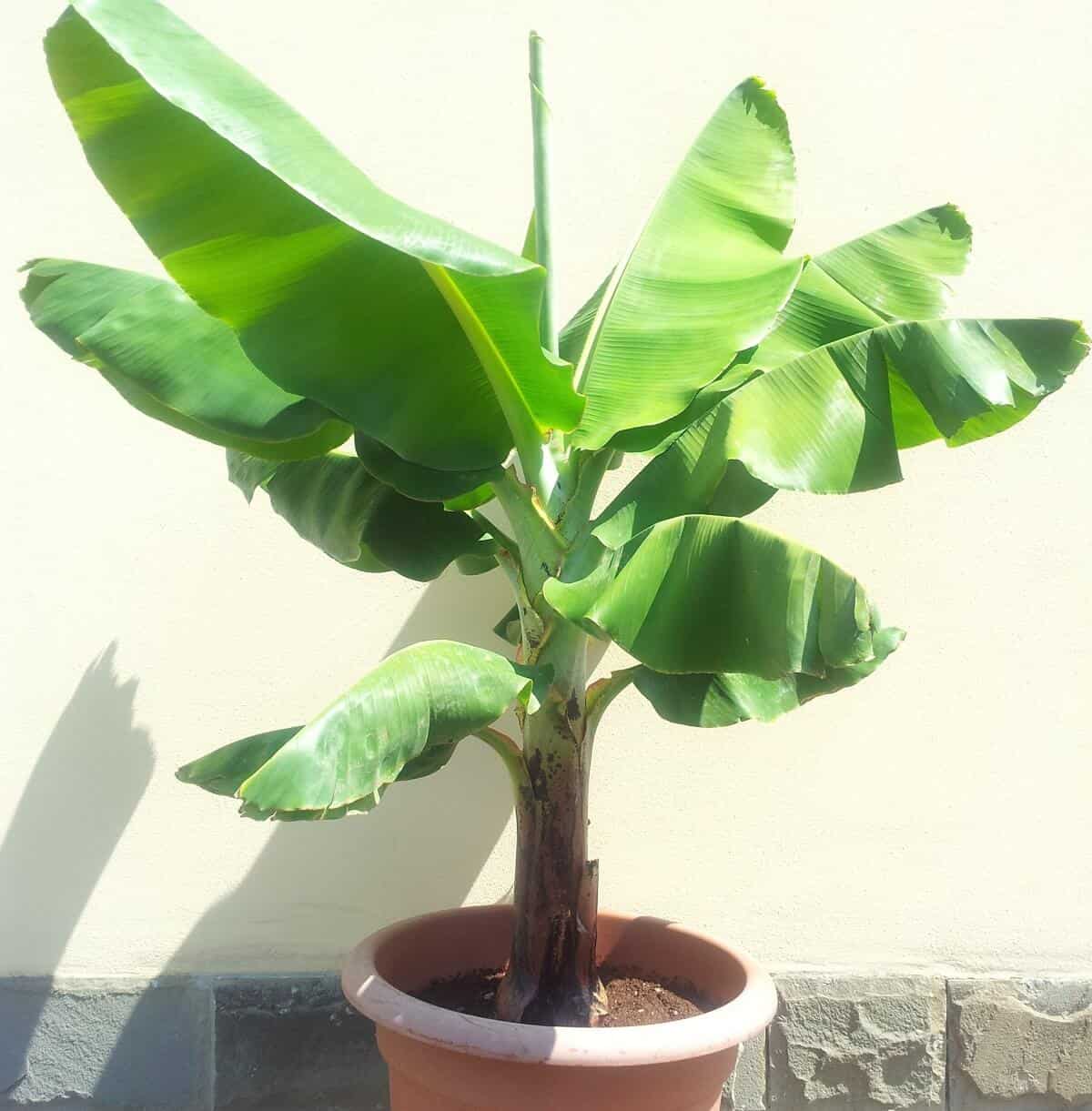
The good thing about dwarf cave dish bananas is that you can grow them in containers. This is especially important if you're pressed for space.
This type of banana thrives in zones 4 through 11 and down up to 20 degrees.
Besides, their extremely lush leaves will add a tropical look to your home and given the right growing conditions, you'll begin to harvest the fruits in less than two years.
Pear Tree
The pear tree (Pyrus communis) is one of the oldest cultivated fruits and can be grown in USDA zones 5 through 8. However, there are some varieties that are hardy to zones 3 and 4 such as Julienne and Loma.
This fruit tree requires full sunlight for at least 6 hours a day, rich fertile soil with good drainage, and lots of water. With proper care and maintenance, you'll begin harvesting pears in as little as two years from planting.
Blueberry
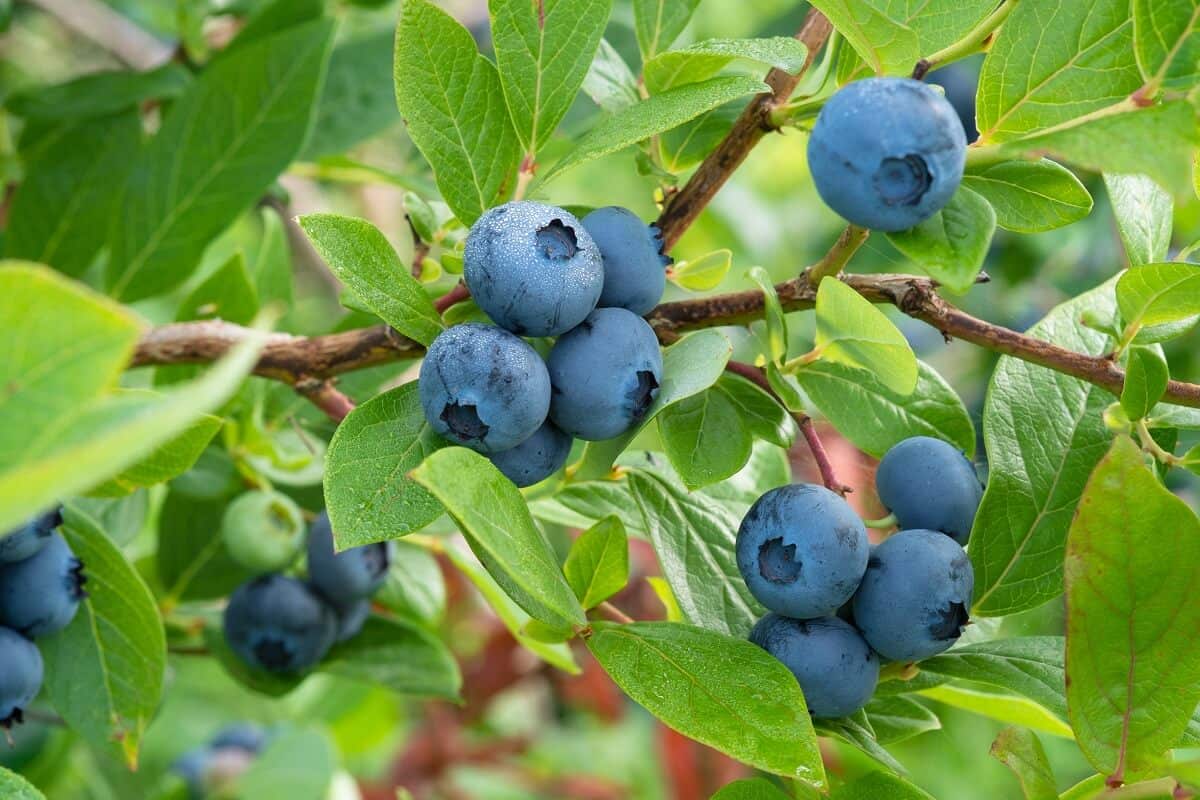
Blueberries are considered superfoods due to their nutritional value and health benefits.
Although they're native to North America, you can grow them in your home garden as far south as zone 4 through 11 with proper care. Blueberries thrive well in full sun, acidic soil, and enough water throughout the season.
Within two years, you should expect to begin harvesting fruits.
Apricot
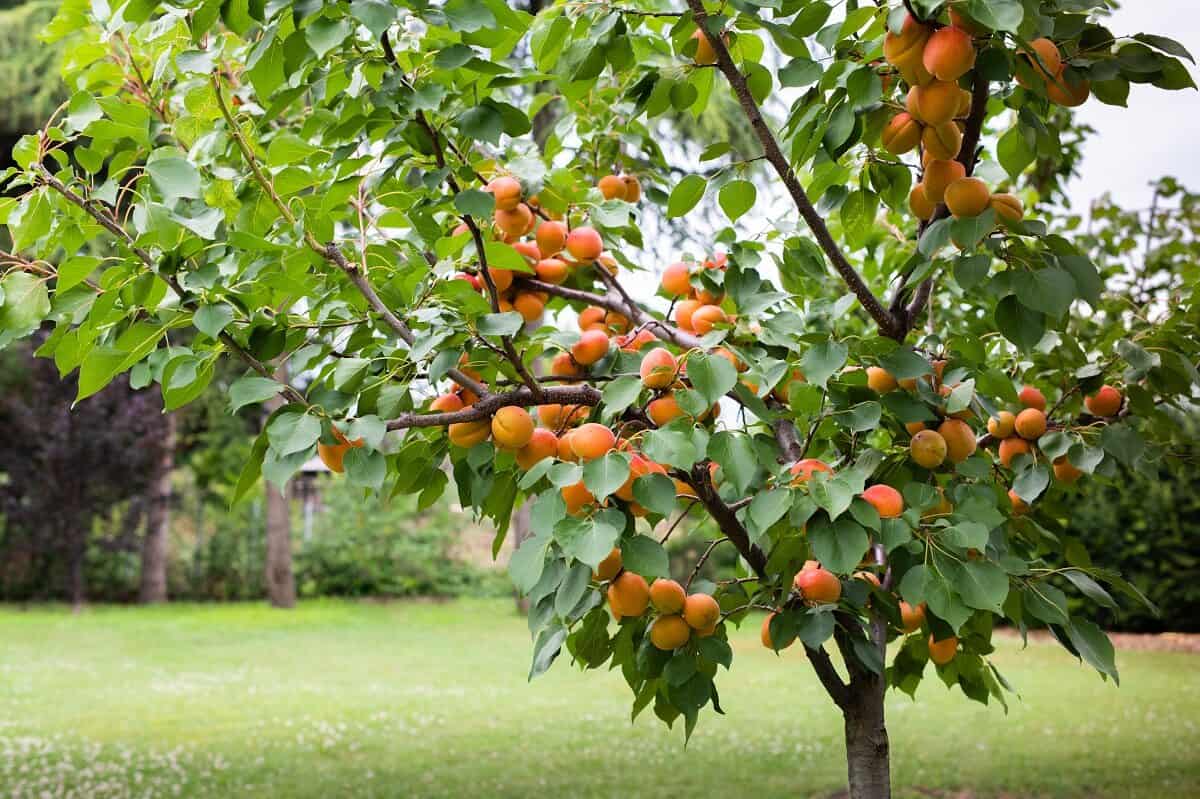
If you love stone fruits, then Apricots are a great addition to your garden. The apricot tree (Prunus armeniaca) is native to central and eastern Asia but can be grown in USDA zones 4 through 9 with proper care.
This fruit tree loves full sun, well-drained soil rich in organic matter, and occasional watering.
Depending on the variety and your region, Apricots will start to fruit in two to four years. They are ready to pick from late mid-summer to early autumn – ripe fruits are soft and detach easily from the tree.
Peach Tree
One of the most popular stone fruits, Peach trees (Prunus persica) grows best in full sun and well-drained soil.
These fruit trees are widely grown in USDA zones 5 through 9 but some types can withstand colder climates down to zone 4.
For optimal growth and yield, prune your peach tree every year and add mulch during summer.
Under proper care, peach trees will begin to bear fruits within two years of planting.
Dwarf Apple Tree
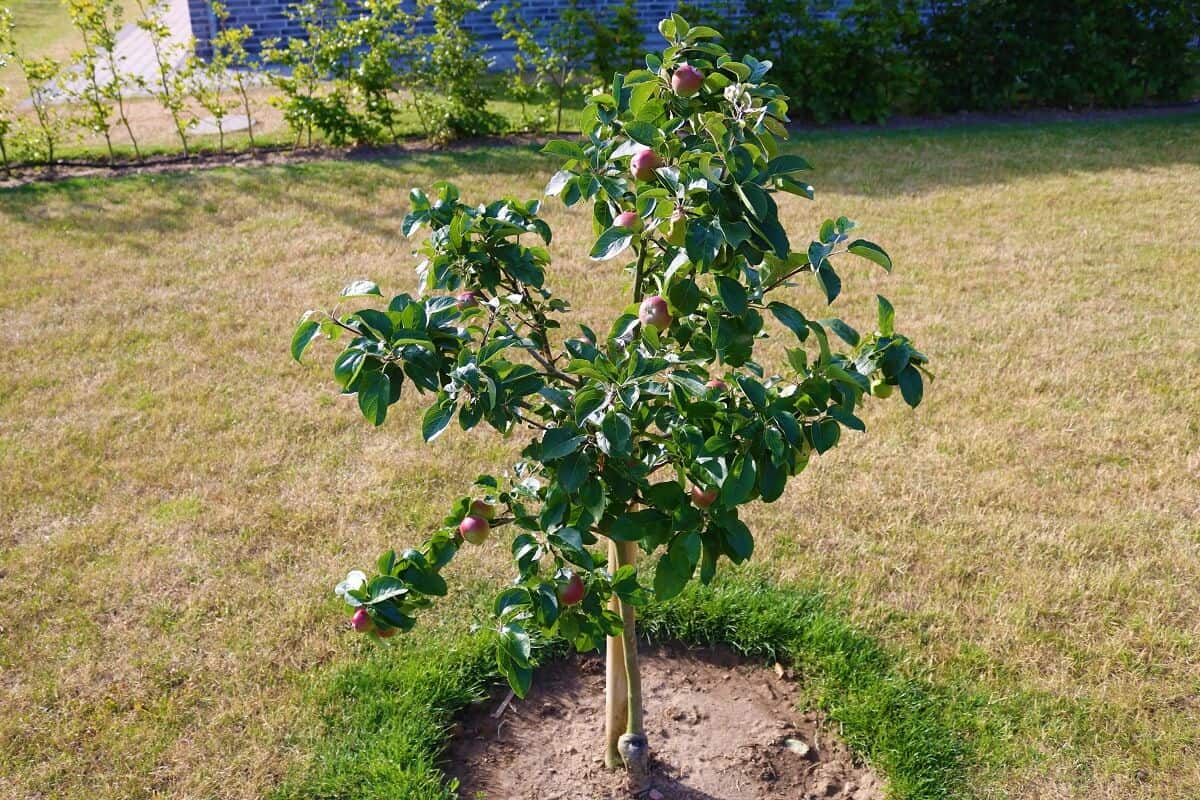
The dwarf apple tree (Malus domestica) is one of the most popular fruit trees due to its versatility and long-term yield potential.
As a dwarf variety, you can grow this in your garden as well as in containers.
For best results, choose a variety that matches your climate and soil type, place it in full sun, and provide enough water during the growing season.
While the standard apple trees can take up to 8 years to begin producing fruits, the Dwarf apple trees will start bearing fruit 2 to 3 years after planting.
Fig Tree

The fig tree is an old crop with its origins in Asia Minor but it can be grown successfully outdoors in USDA zones 5 through 11.
This fruit tree loves full sun and well-drained soil with a pH between 6 -8.
Figs thrive in warm regions but cold-hardy varieties such as Brown Turkey and Celeste will grow in colder climates and start producing fruits within two to three years of planting.
Meyer Lemon Tree
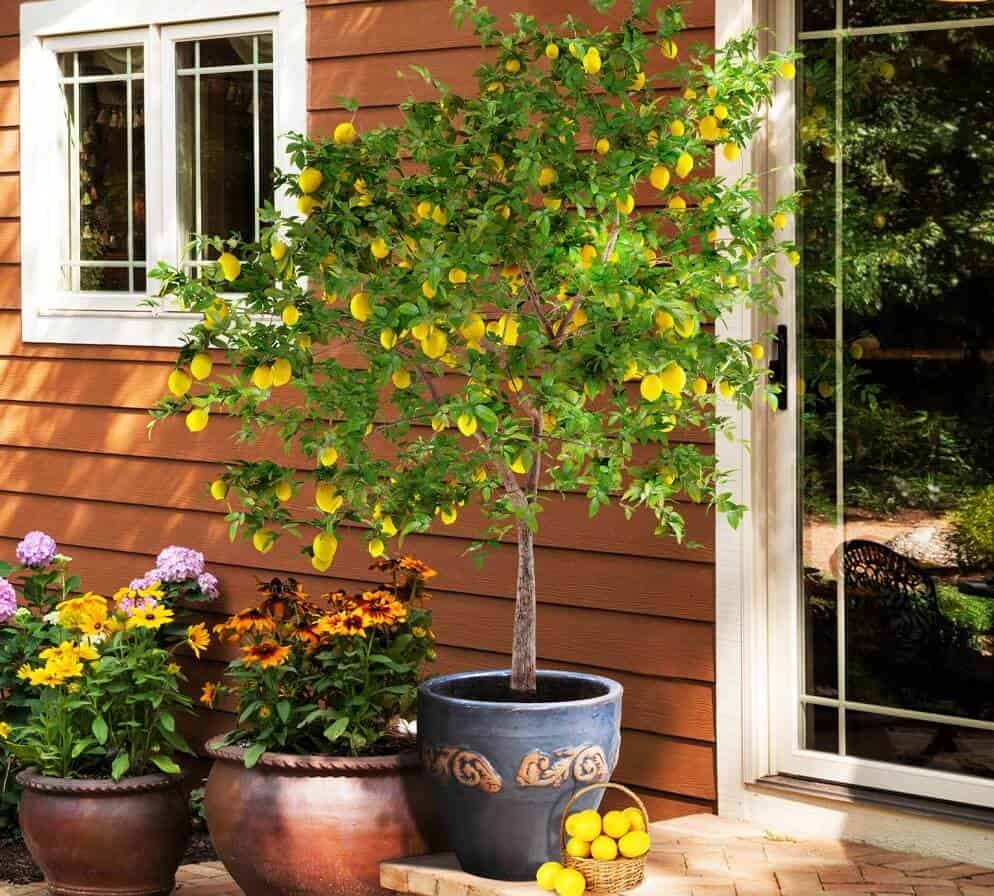
Meyer Lemons are different from the small, tart, and acidic lemons at your grocery store – the fruit is literally a cross between traditional sour lemons and sweet oranges. That means you get both sweet and savory flavors from each squeeze of this delicious fruit!
According to Fast Growing Trees, The Meyer Lemon Tree has remarkable cold and heat tolerance so anyone in the country can grow it – if your winters get cold, simply bring your Meyer Lemon Tree indoors for the winter.
Raspberry Bush
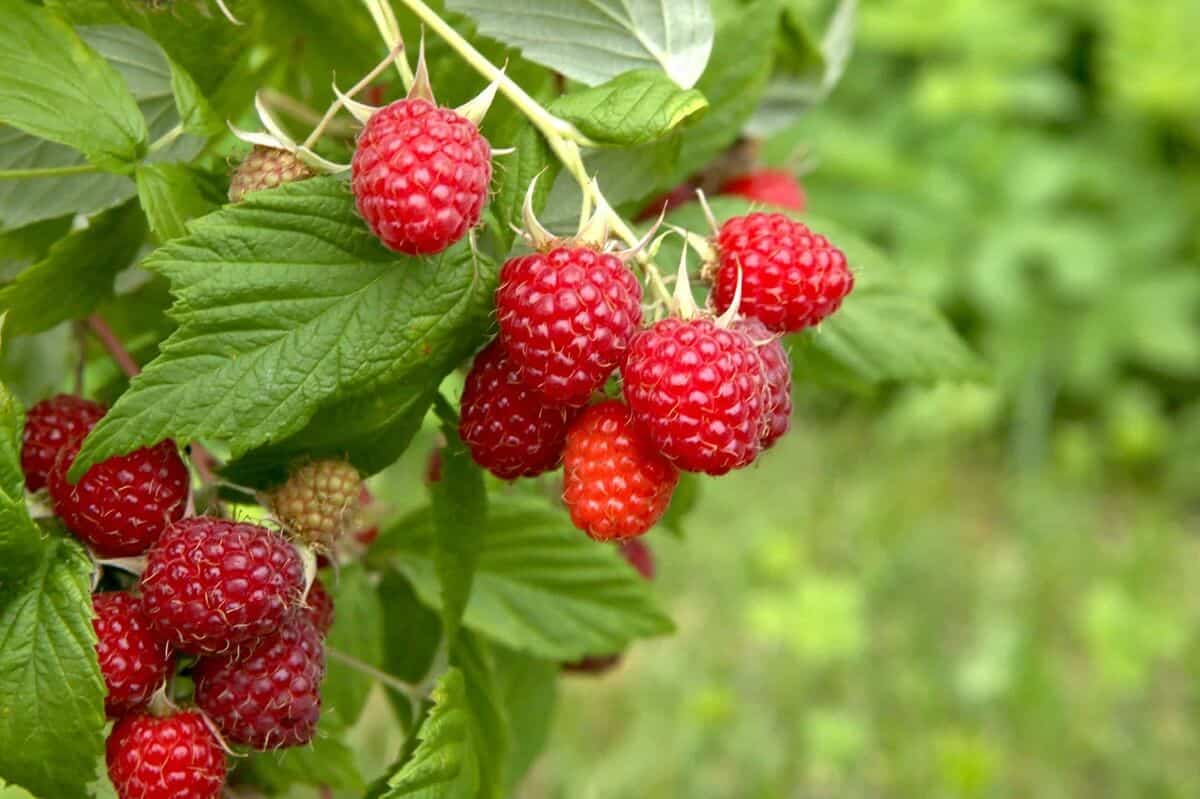
Raspberries are a summer treat that many people love and you can grow them in your garden easily.
These shrubs prefer full sun, well-drained soil with a pH between 6 -7, and plenty of water throughout the season to ensure optimal growth and yield.
You should expect fruits within two years of planting, and further in the 3rd year.
Mulberry

Mulberries are delicious and healthful fruits that can be eaten fresh or used to make jams, pies, and other treats.
These berries love full sun or partial shade with moist soil and will start bearing fruits within a couple of years of planting.
Be sure to prune your mulberry bush regularly to maintain optimal growth.
Conclusion
Growing fruits in your garden is a great way to enjoy fresh produce while also beautifying the landscape.
By choosing hardy, resilient varieties, and fastest growing fruit trees, you can expect to start harvesting within two years of planting or less.
From apricots to raspberries, there are a variety of fruits to choose from – each with its own unique flavor and characteristics.
No matter which one you pick, taking good care of your fruit trees will ensure that you have a steady supply of fresh fruits for years to come!
